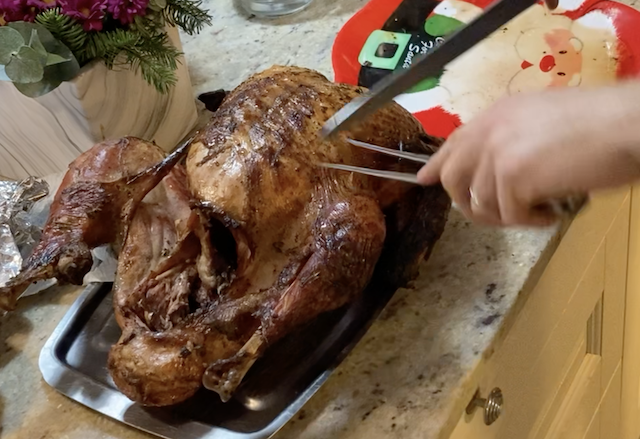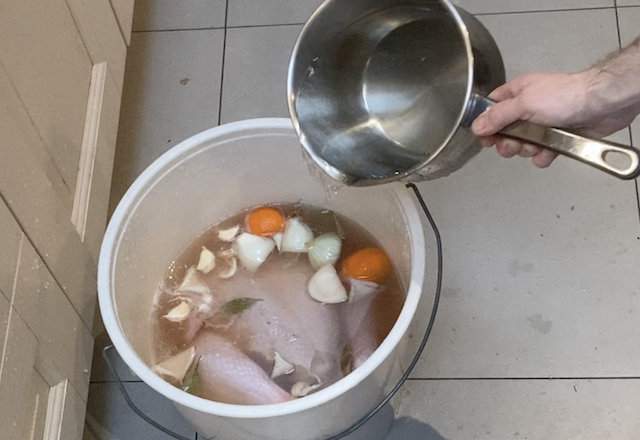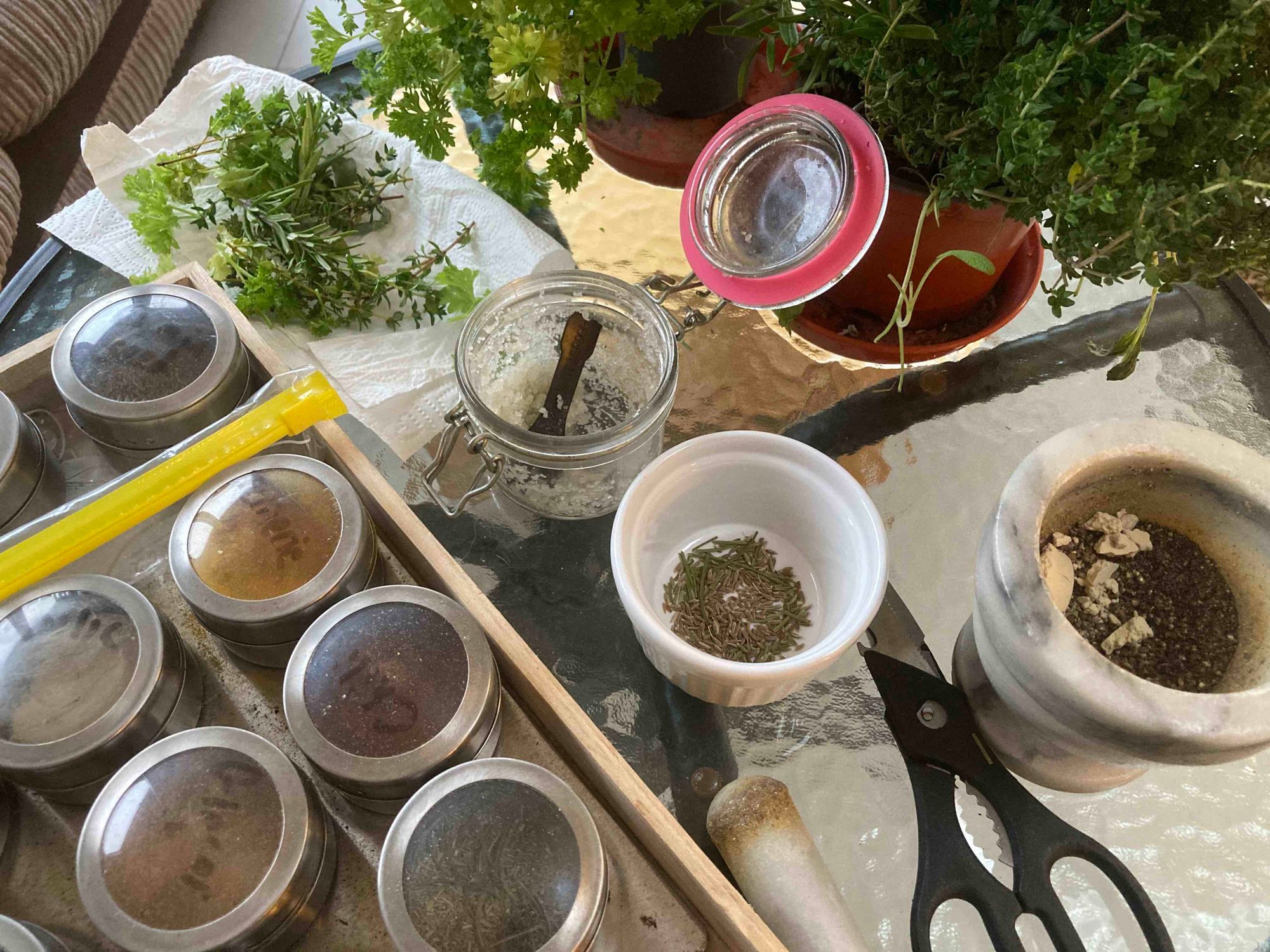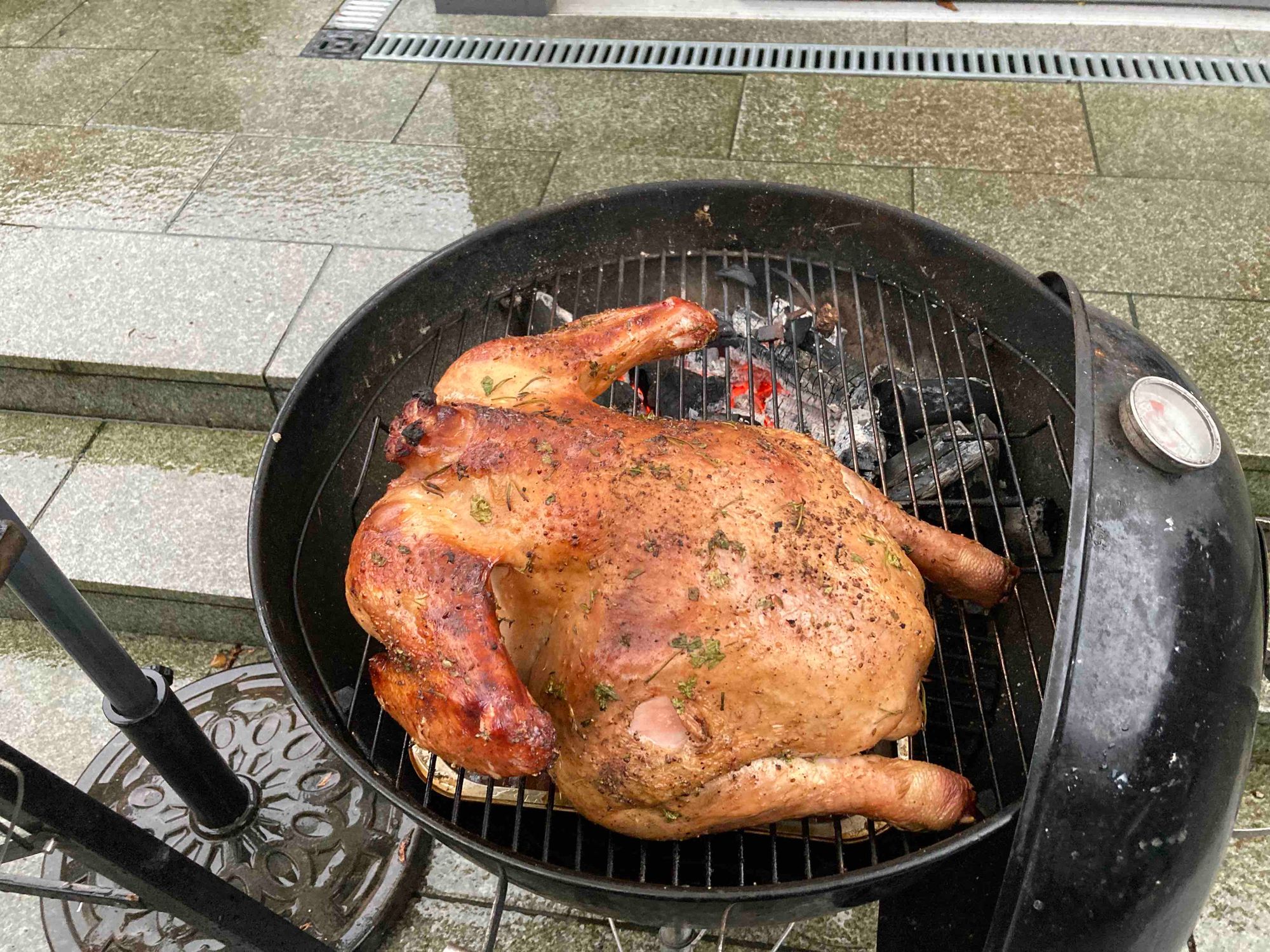Christmas Turkey
Nothing feeds an extended family for Christmas dinner like a roasted turkey barbecued slowly outdoors.

Barbecuing on Christmas Day 2021 was a challenge, with lots of rain and heavy wind. The bird turned out pretty tasty despite the weather.
Christmas dinner in Ireland has evolved from the traditional goose towards turkey, which can feed extended families. Perhaps we have copied the American Thanksgiving tradition a little? My family has always eaten turkey, and for the last five or six years, I’ve cooked it successfully outdoors.
Roasting a turkey on the barbecue requires some extra preparation but the results are amazing. Also it frees up space in the conventional kitchen ovens for the rest of the dinner trimmings to be cooked.
Brine
Here is the ingredient list for the brine, a salty, sweet mixture that will seep into the turkey flesh and provide loads of subtle flavour. I prepared this about twenty-four hours before starting to cook the bird.
- About a cup of pink Himalayan salt
- About half a jar of honey
- 2L apple cider
- some clementines
- a lemon
- garlic cloves, crushed
- some bay leaves
To prepare the brine, dissolve the salt and honey in a saucepan of water until it’s all gone. Then combine all the ingredients together. Make sure that the temperature is nice and chilled before adding the turkey – add ice to cool it down further if necessary.

I used my home brewing bucket which has a tight lid. After placing the turkey inside, top it up with some extra water to ensure the turkey is covered. Leave it somewhere cool until it’s time to cook.
Preparing to Cook
When ready to get started, remove the turkey from the brine and drain off as much as possible. The brine can be discarded now as it has served its purpose. Use some kitchen towels to remove as much brine as possible and pat it dry.
Use a little olive oil or melted butter to coat the turkey all over. This will help the herbs and spices cling to the skin and help with the browning. This is the spice and herb mix I used this year:
- black pepper (about 1 tablespoon)
- Celtic sea salt (about 1 tablespoon)
- garlic powder (about 1 tablespoon)
- chopped fresh parsley, sage, rosemary, and thyme
- dried cumin
Coat the turkey and leave aside while lighting the barbecue and getting it up to cooking temperature.

Cooking
Use indirect heat. The turkey I cooked was on the small side, about ten pounds, and took almost three hours to cook fully. So have enough charcoal loaded or be prepared to add more during the cook. I used a full chimney starter of lump wood charcoal poured onto some unlit coals – a mixture of lump wood and charcoal briquettes.
The turkey will drip a lot of grease so it’s a good idea to place it in a foil try. I placed the foil tray at the bottom of the barbecue to catch the drippings and used some red ale to keep the inside of the barbecue nice and moist.
With the foil drip tray in place and the grill on, place the turkey down opposite the heat with the breasts down. The trick is to cook for an hour upside down and the rest the right way up.

I got the temperature in the barbecue to somewhere between 180˚C and 200˚C as measured at the top vent. I find that with a roast this size that it blocks the convections in the kettle, so this is the only place that I can get a consistent reading.
After about 30 minutes, I rotated the bird, changing which side was facing the heat. This was an opportunity to add some more hickory chips which had been soaked in red ale and to baste the turkey with some of the beer and grease mixture.

An hour into the cook I put the turkey right way up and added a few extra pieces of charcoal. By adding it before I needed them it meant that I did not need to use the chimney starter. It was far too wet to light it anyway!
I kept rotating the turkey every thirty minutes or so and adding fresh hickory, and also basting the bird. By this stage I was dressed in my ski-gear and was holding the sun umbrella to keep it from blowing into the neighbours garden. Fun.
The internal temperature I was going for was 75˚C and I wanted to get this reading consistently in both sides of the breast. The legs and thigh temperature was a little higher as they fell a lot closer to the heat.
Rest
All roasted meat should be rested, but this is more important for a large piece of meat. Once it is off the heat, cover with foil and get the rest of the dinner ready. Thirty minutes resting is OK but it should stay nice and warm if you leave it for hour. No rush.
We only ate the breast on Christmas day. I froze the legs and thighs and these will make a nice turkey curry later in January. Curry made from barbecue roasted turkey is amazing.